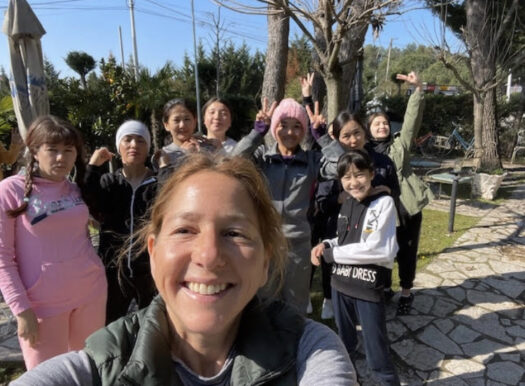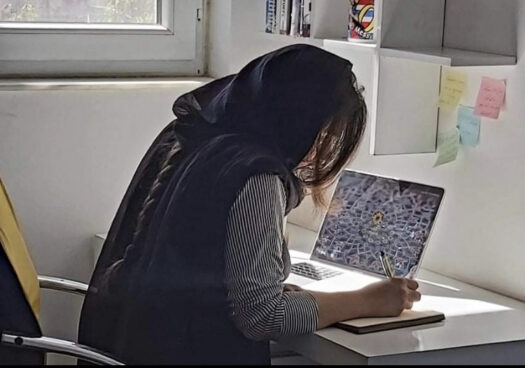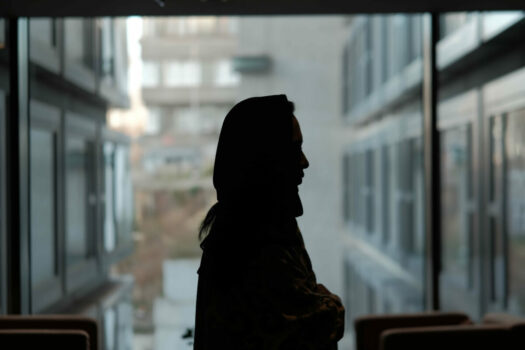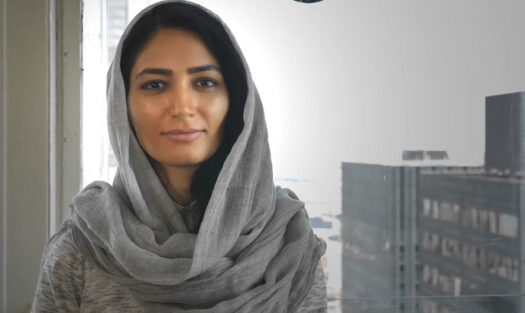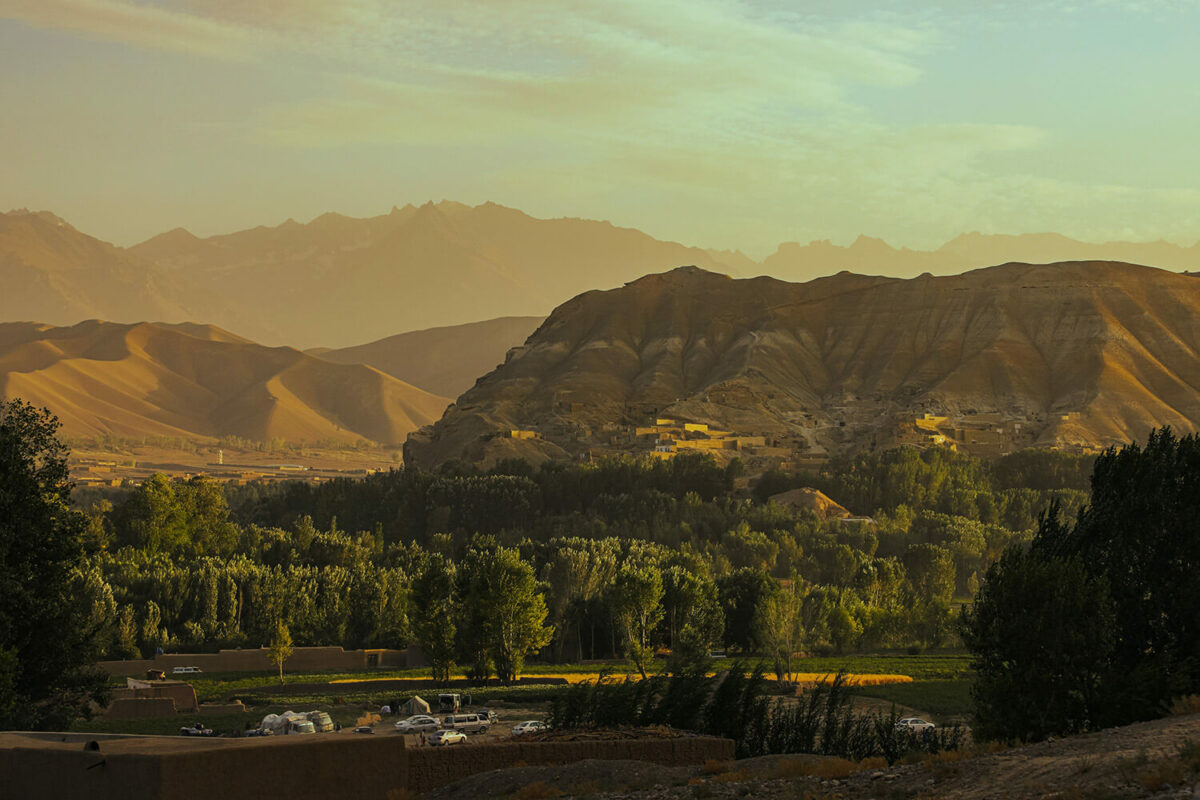Danna Harman didn’t have any tools or resources, but she knew she had to do something to help the Afghan girls who reached out to her.
A Timeline of Women in Afghanistan
Breakthroughs and Setbacks
During the Durrani Empire and the early Barakzai Dynasty, Afghan women live in a state of purdah, or gender segregation, imposed by patriarchal customs. They are expected to cover their hair and bodies, and play no public role in society.
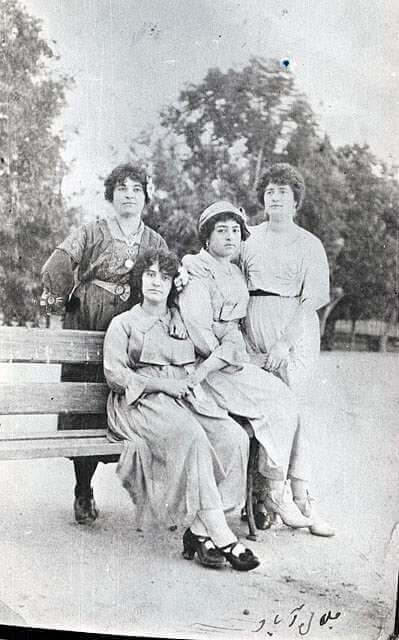
Afghan women gain suffrage – one year before women in the United States.
The first school for girls opens its doors.
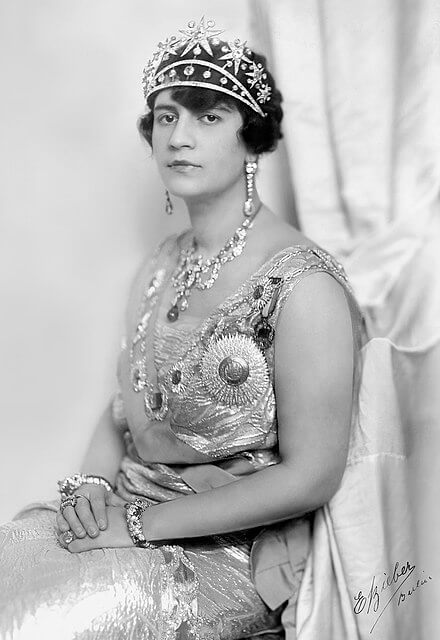
Queen Soraya, wife of King Amanullah, founds the first women’s magazine, Irshad-e Naswan, which advocates for gender equality.
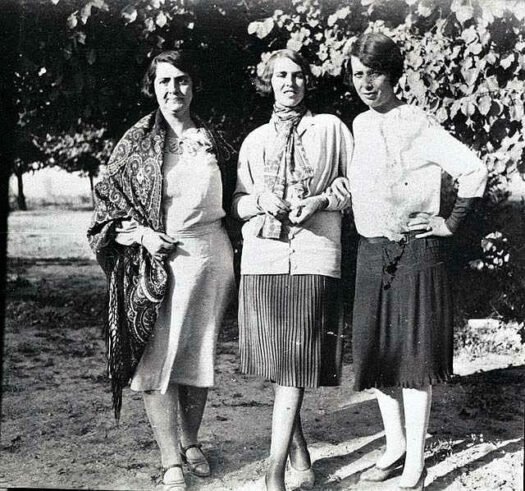
Queen Soraya and Princess Sahira Begum Seraj al-Banat found the first women’s organization, Anjuman-i Himayat-i-Niswan. This same year, King Amanullah sends 15 female graduates of the Masturat middle school, daughters of the royal family and government officials, to study in Turkey.
After King Amanullah abdicates, Mohammad Nadir Shah becomes King. His reign sees a string of setbacks for women: he closes girls’ schools, requires women to wear veils and reverses many other reforms.
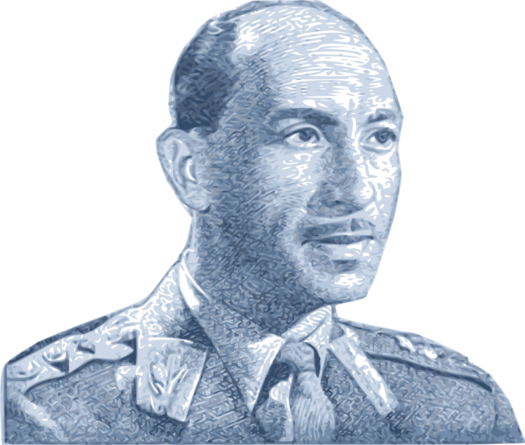
Mohammad Nadir Shah is succeeded by his liberal-minded son, Mohammad Zahir Shah, who reinstates a number of King Amanullah’s initiatives in favor of women’s rights. Despite some major improvements, the countryside remains deeply patriarchal, and the lives of rural women are not affected by the changes taking place in the cities.
The United States formally recognizes Afghanistan.
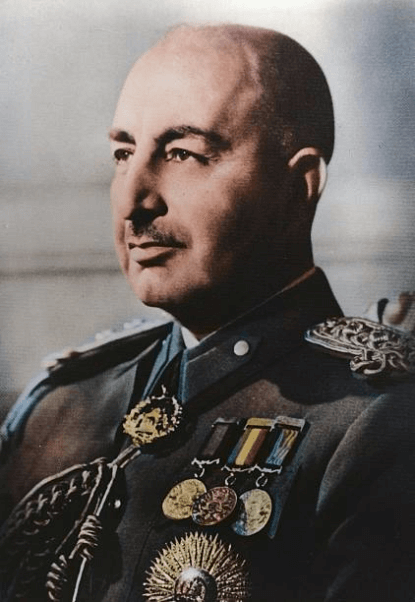
The pro-Soviet Gen. Mohammad Daoud Khan becomes prime minister, introducing a number of social reforms that would allow women a more public presence.
Women are allowed to attend universities and enter the workforce.
Women help to draft Afghanistan’s third constitution, which grants women the right to run for office.
Jameela Farooq Rooshna becomes the first female judge in Afghanistan.
Prime Minister Khan overthrows King Mohammad Zahir Shah in a military coup. He abolishes the monarchy and makes himself president, meaning that Afghanistan now has a Soviet-backed government.
President Khan proposes a new constitution that grants more rights to women.
President Khan is killed in a communist coup. Conservative Islamic and ethnic leaders who objected to social changes introduced by Khan begin an armed revolt in the countryside, and the guerrilla movement Mujahideen is created.
The USSR invades Afghanistan to bolster the faltering communist regime. Religious extremist groups gain greater control of the country, and women begin to see an increase in restrictions on their freedom.
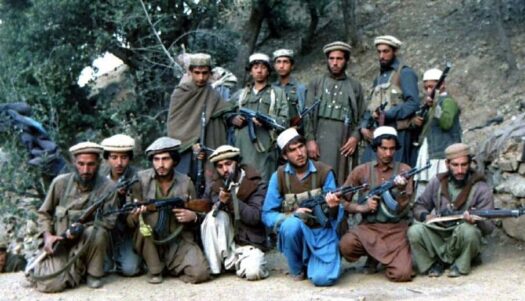
The Mujahideen rebels have united against Soviet invaders and the USSR-backed Afghan Army.

Saudi Islamist Osama bin Laden makes his first documented trip to Afghanistan to aid anti-Soviet fighters. The United Nations investigates reported human rights violations in Afghanistan.
Osama bin Laden and 15 other Islamists form the group al-Qaeda to continue their “holy war” against the Soviets and others who oppose their goal of a pure, Islam-governed nation.
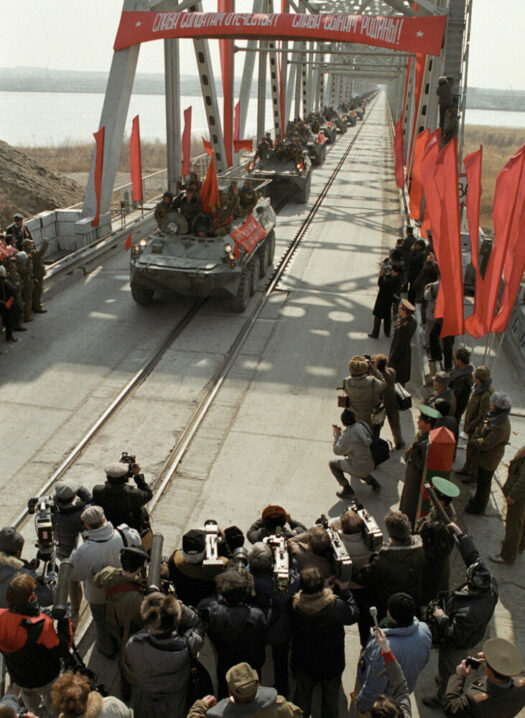
100,000 Soviet troops withdraw from Afghanistan. However, the Mujahideen continue their resistance against the Soviet-backed Dr. Mohammad Najibullah, who had been elected president of Afghanistan in 1986.
The Mujahideen and other rebel groups storm the capital, Kabul, and overthrow Najibullah. The group forms a largely Islamic state.
The newly-formed Islamic militia, the Taliban, now hold power. Most Afghans, exhausted by years of drought, famine and war, approve of the Taliban initially. They outlaw girls’ education after the age of eight, bar women from working and require women to cover their bodies and faces in public. They even ban women’s voices on the radio and outlaw any displays of images of women.
Al-Qaeda operatives hijack four commercial planes, crashing them into the World Trade Center in New York and the Pentagon in Washington, DC. A fourth plane crashes in a field in Shanksville, Pennsylvania. Close to three thousand people die in the attacks.
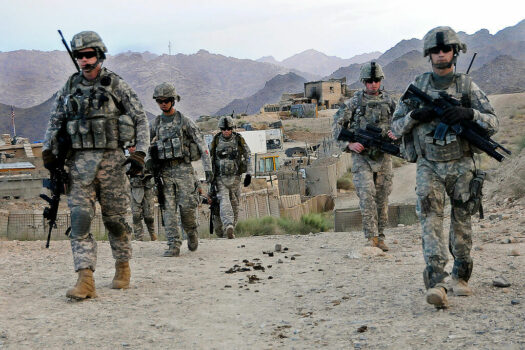
With British support, the U.S. military begins a bombing campaign against Taliban forces.
The Taliban surrender Kandahar and Taliban leader Mullah Mohammad Omar flees the city, leaving it under tribal law administered by Pashtun leaders. This date is what many attribute to the fall of the Taliban.
The National Council adopts a new constitution following input from nearly 500,000 Afghans, some of whom participate in public meetings in villages. The new constitution allocates 25% of parliamentary and provincial council seats to women, as well as 30% of civil service positions. Alongside this, the Ministry of Women’s Affairs is created as the main body responsible for women’s rights and empowerment.
Parliament passes the Shia Personal Status Act, which allows a husband to starve his wife if she refuses to have sex. Women’s rights activists gather in front of Parliament to protest against the law, and are met by a force of Shia clergymen, who came out in support of the law.
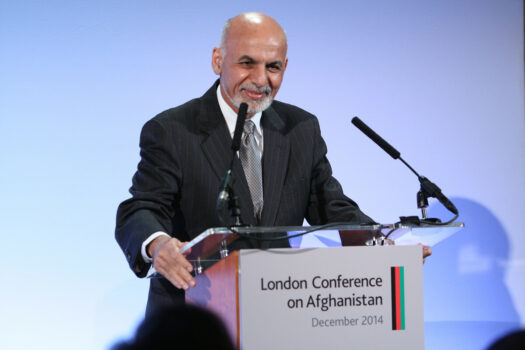
Ashraf Ghani becomes president after drawing a large number of voters among women and youth. His wife opens the Office of the First Lady to serve Afghan women and children. He appoints women in the cabinet positions in heavily male-dominated sectors such as mining and communication and requires all the ministries to have at least one woman as deputy minister. Furthermore, he supports the formation of the Afghan Women Chamber of Commerce and Industries and gives 5% preference to Afghan women-owned companies bidding for public contracts.
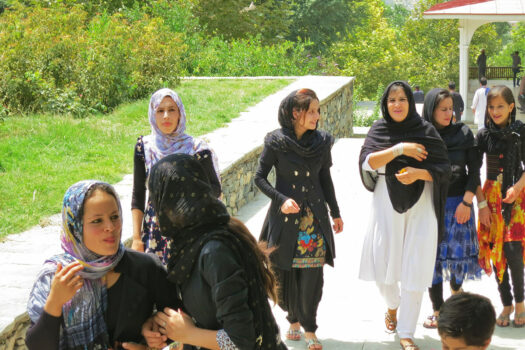
Former president Donald Trump sets an agreement with Taliban insurgents in February 2020 that all US forces would withdraw from Afghanistan by May 1, 2021.
President Biden announces a four-month postponement of Trump’s deadline, saying U.S. and NATO troops “will be out of Afghanistan before we mark the 20th anniversary of that heinous attack on September 11th.”
The U.S. leaves Bagram airfield without telling the base’s new Afghan commander.
The White House says Taliban takeover “is not inevitable” following the U.S.’ speedy withdrawal from the country.
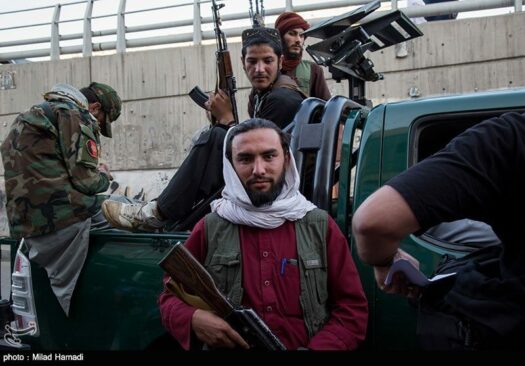
The Taliban captures Herat.
The Afghanistan government collapses as the Taliban takes over its capital city, Kabul.
Two suicide bombings occur outside the Kabul airport as thousands of Afghans try to flee the country following the Taliban’s takeover. The bombings killed at least 169 Afghans and 13 U.S. soldiers.
The U.S. transports a final contingent of troops from Kabul Airport, officially ending America’s longest war.
IsraAID evacuates its first cohort of 42 Afghans to Abu Dhabi.
The Taliban announces that women can attend universities with gender-segregated entrances and classrooms, but they can only be taught by professors of the same sex. Women are also required to wear hijabs.
IsraAID evacuates its second cohort of 125 Afghans to Albania.
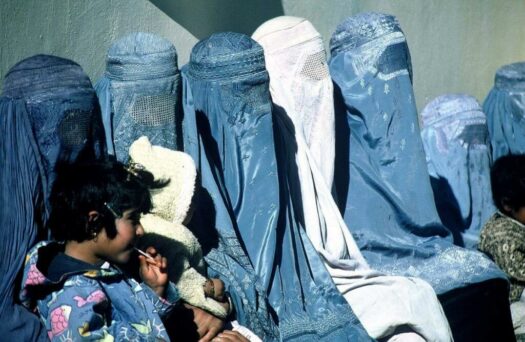
Tens of thousands of secondary school girls are ordered to stay home.
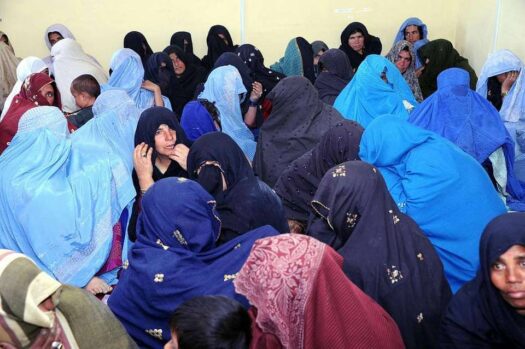
Taliban supreme leader Hibatullah Akhunzada orders women to fully cover themselves, including their faces, in public and generally stay at home. Women are also banned from inter-city travel without a male escort.
Women gather outside the education ministry in Kabul to protest the ban on education. Taliban fighters break up the demonstration.
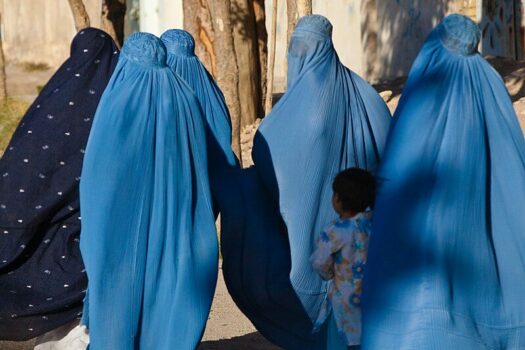
Women are barred from entering parks, gyms and public baths.
Armed guards stop hundreds of young women from entering university campuses, one day after a terse release from the minister for higher education announces an order “suspending the education of females until further notice.”
Women are banned from working for national and international NGOs.

The Taliban orders all beauty salons to shut their doors by July 27.
The Women We Talked To
The Aspiring Journalist Following in the Footsteps of Her Father
Marwa Dashty’s father, a well-known journalist, was killed after the Taliban took over. Now, the 20-year-old wants to continue his legacy by becoming a journalist herself.
The Teacher Who Chose to Stay Behind
When Munireh’s father first received news of the Taliban takeover, he sent all the women in the family to Iran – but she refused to leave Afghanistan.
The Pop Star Whose Fan Helped Her Get Out
After Shakiba Teimori showed her long, flowing hair on television, it was as if she were exiled. And then she fled for real.
The Judge Who Escaped: ‘We Lost All of Our Achievement’
Since the Taliban’s return to power, women judges – who once dared to sentence men for their crimes – have been forced into hiding. We spoke to one whose identity we are protecting.
The Founder of Afghanistan’s First All-Girls Coding School
Fereshteh Forough opened Afghanistan’s first coding school for girls and women – but the Taliban’s ban on education prevents students from learning in-person.
The Mobile App Developer Secretly Working Online
Parima hides the fact that she works remotely, as many of her neighbors in Afghanistan don’t believe women should have jobs.
The College Student Getting a Fresh Start
Rodaba Noori is enjoying her new life at Bard College in upstate New York, but she still doesn’t consider it home.

